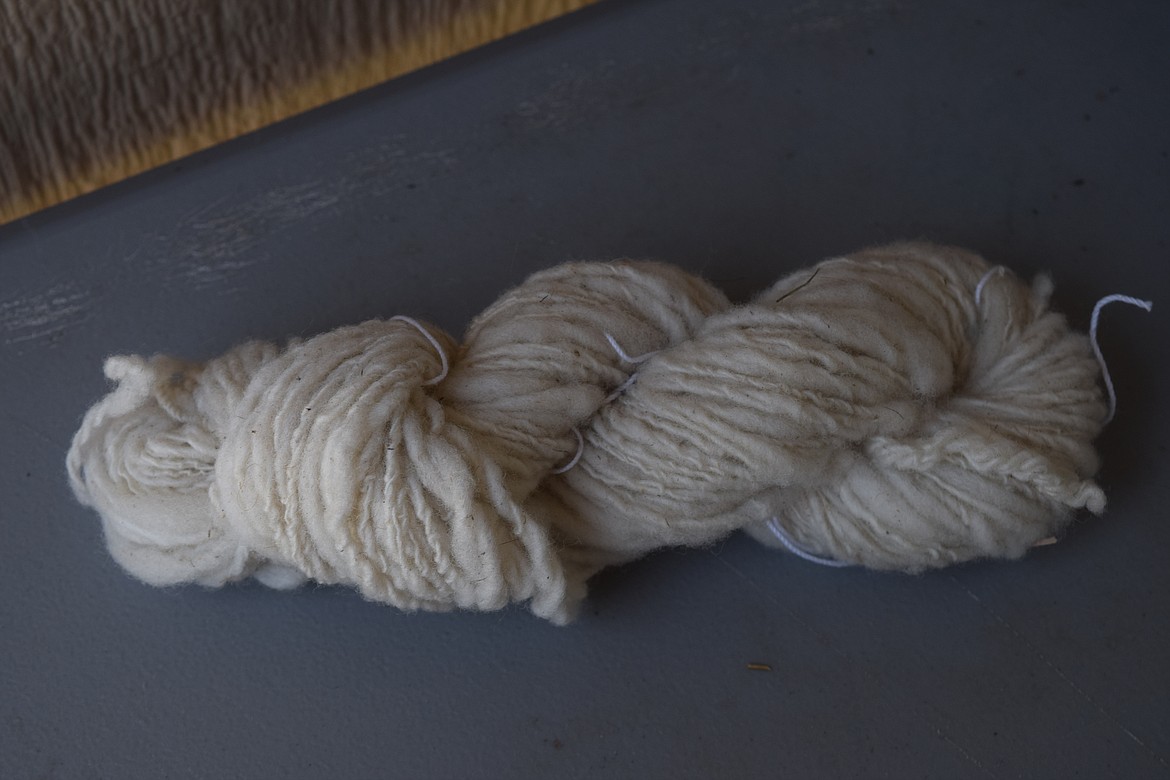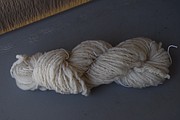Ancient craft, modern hobby: Moses Lake woman spins and colors her own wool
MOSES LAKE — You can weave a basket out of wool that you can boil water in.
Not by setting the basket on a fire, of course. But people have used woven pots to cook, boiling water by adding slowly heated stones to woolen, tree bark or plant-fiber baskets woven tightly enough to make them waterproof.
Loveta Boyce doesn’t make those kinds of baskets. But knowing that people have been weaving for thousands of years is one reason she cards and dyes wool, as well as spinning it into string and even weaving it.
“No culture ever went on to make a pottery pot that didn’t start out making string,” Boyce said. “You can weave a basket to boil water in it, and people did that before they made a clay pot.”
Born in Montana, Boyce said she grew up on a ranch midway between Othello and Moses Lake, and was always surrounded by livestock. So much so, she said, that while other farmers “had dirt in their veins,” her father “had manure.”
Describing herself only as “retired,” Boyce said she has taught school and worked in finance and medical billing, but since retiring five years ago has devoted herself to working with wool as a way of keeping herself busy.
“I always loved fiber,” she said. “It keeps me out of everyone’s hair. If I don’t have something to do I pester people.”
Boyce, who said she’s currently working with wool from a niece’s 4-H project, said that carding disentangles and lines up wool fibers — each one a hair on a sheep’s body when it is sheared.
Carded wool is formed into “rolags,” or small rolls, that can then be spun into string or yarn or matted together into felt.
“Wool has scales on the fiber and so as you spin those together, the scales catch on each other, and that’s what helps hold it together,” she said. “It sticks on itself.”
On this bright Sunday afternoon, however, Boyce isn’t spinning. She’s got her dyeing equipment set up outside. It’s messy work, dyeing wool, and she prefers to do it outside so she doesn’t make a mess in her kitchen. Dyeing involves heating water and basically cooking rolags at just below boiling in a mixture of dye and an acidic substance — citric acid or vinegar — to fix the color.
Boyce then said she will let the wool cool overnight, pull it out and dry it.
While she usually uses professional acid dyes, Boyce said a recent project with her nieces and nephews had them dyeing wool with unsweetened Kool-Aid.
“The colors that we use in food to dye things are pretty highly regulated, and they are the same as acid dyes and already has citric acid in it,” she said.
Once they’re dyed, Boyce lets the woolen rolags dry outside in the sun for a few days, and then will eventually spin them into yarn. The secret to spinning is making yarn or string a consistent width, Boyce said, something she tried to do this year during the “Tour de Fleece,” an event the world’s spinners undertake during the Tour de France bicycle race.
Boyce held up a small skein of undyed, unevenly-spun yarn, some portions thicker than others. She spun it herself, and is not quite sure what she will do with it. It might make a good sweater, she said.
“I’ve always loved to weave. I’ve got a big loom and several smaller looms,” she said. “Tapestry weaving, that’s where most of this will go.”
In the end, it’s not so much about the final product as it is about simply being involved in something people started doing long ago.
“It’s kind of satisfying,” Boyce said. “We take thread for granted in our culture. To think that’s where our technology started.”
Charles H. Featherstone can be reached at cfeatherstone@columbiabasinherald.com.









